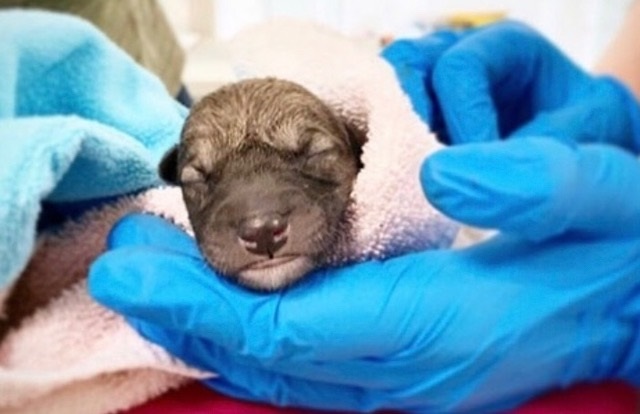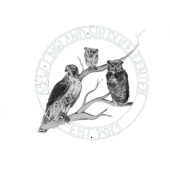
People can live among coyotes and never see them. Coyotes have been interacting with and adapting to people for the last 100 years. Coyotes are curious and smart, and urban areas can provide the perfect balance of food, shelter and water for them to thrive. In return, coyotes provide free rodent control by feeding on mice and rats, and help regulate the population of other species that may come into conflict with humans like voles, Canada geese, white tailed deer and wild turkeys. In order for nature to thrive, there has to be a way to keep species in balance.
Over the past few months, you may have been hearing coyotes howling more frequently. That is because January-March is coyote mating season. Coyotes are family oriented and mate for life. The breeding pair will typically give birth to a litter of 4-7 pups usually in May or June. The pups will be placed in a warm den for 6 weeks while nursing. After that time, they will begin to learn to hunt.
Coyotes are often misunderstood due to mis-information. They are smaller than people think, usually weighing 25-35 lbs. Their fur and long legs make them look larger. They have amber eyes, a black tipped tail, large ears and a narrow muzzle. Their fur is grey-brown to yellow-grey. Eastern Coyotes and Coywolves are the same animal. There is some wolf DNA in the Eastern Coyote. They are naturally skittish and afraid of humans. They usually hide and only their footprints or scat lets you know they have been around. They do howl, and produce a variety of sounds. They communicate to defend their territory , and a small group of 2 or 3 can distort their voices to sound like a group of 20. They are opportunistic omnivores: they eat rodents, small mammals, and fruits and berries. They may prey on small cats or pet dogs if the opportunity is there. They generally do not pose a threat to humans.
Coyotes are diurnal, mostly active at dusk and dawn. They live in family groups with one breeding pair and 3-4 other relatives. The pups are born into this protective environment. From September-December, the pups from the previous year leave the group and become transient coyotes. They will look for a place to call home that is not already populated by a coyote clan. Each home range for resident coyotes average 2-5 square miles. Transient coyotes can average 10 square miles.
How do coyotes become a nuisance?
Coyote-human interactions become problematic when humans inadvertently make their home environment attractive to coyotes . Food is the number one problem. Coyotes have plenty to eat in their natural environment but will venture closer to your home if there is pet food or water left outside, or trash or compost. Sometimes people intentionally feed coyotes, especially the pups and don’t understand the negative outcome. Never feed coyotes, and avoid feeding pets outside. Rake the areas around birdfeeders and remove fallen fruit from the ground. Keep trash secure until pickup. Remember, they are opportunistic and will risk getting close to humans for the reward of food, and then they begin to see the human as a food source. They will also see free-roaming pets as a food source. Keep all pets leashed and in your sight. Never run from a coyote, it activates their prey instinct. Never ignore a coyote, it creates habituation.
How do you manage coyotes you feel are in your space?
Coyotes have learned that humans can be associated with food, and that people generally react one of two ways. They become very frightened and go inside or they try to get close because coyotes are seen as special and unusual. To co-exist safely, both behaviors have to change. When a coyote is seen close to you or your yard, it is important to stand your ground and use some basic hazing techniques. Hazing is a series of activities that should change behavior in habituated coyotes and instill in them fear of people. This is for their benefit. When people feel threatened by coyotes, generally the coyote ends up dead. It is better for the coyotes to know the limits. Hazing involves, yelling, throwing small sticks or rocks near the coyote (not at it), spraying water (a super soaker works great), making yourself look bigger, shining bright lights, and loud noises such as banging on pans or shaking cans of rocks or pennies. It is important to maintain eye contact with the coyote and to not walk away first. You must do this every time they appear until they are no longer in your space.
Why killing coyotes is unnecessary and doesn’t work.
Nature hates a void. Killing coyotes as a way to control population doesn’t work. Within a year or two you have as many coyotes as you had before. Killing one breeding pair leaves space open for another breeding pair to move in and establish a home. At the same time, lone coyotes will move into mate, young coyotes will have offspring sooner, and litter sizes will grow.
Why not relocate coyotes?
Despite what we think, this is not a humane alternative. Relocating a coyote is a death sentence for that animal. Coyotes are territorial and will try to do anything to get back to its home. They are often killed crossing roads, or killed by other coyotes in territorial disputes, or may starve from not knowing the area.
Education is the best way to keep humans and coyotes co-existing peacefully. Humans can take an active role by removing attractants (food), being responsible pet owners, hazing coyotes who are in too close and learning about coyote behavior.
To learn more about the Cape Wildlife Center or help in their mission, visit www.capewildlifecenter.com or call 508 362-0111.
Caryn Ritchie is the volunteer coordinator for the Cape Wildlife Center and holds both a Massachusetts wildlife rehabilitator’s license and a federal permit to rehabilitate migratory birds.

Recent Comments